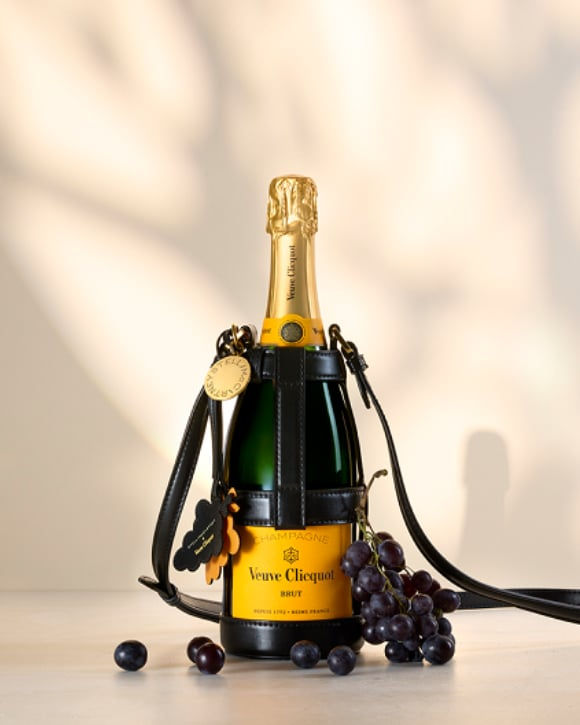Chefs from Croatia, Slovenia, Hungary, Bulgaria and Romania who are part of the Solaire Tables community gathered in Zagreb to show their innovation and creativity through a joint dinner.

The first regional Veuve Clicquot Solaire Tables dinner, held at the Esplanade Hotel in Zagreb, gathered female chefs from several countries and aroused great interest among connoisseurs of the wine and gastronomic scene and distinguished guests. Among those present were Aleksandra Dojčinović, Mirjana Brlečić, Vanja Halilović, Frane Barbieri, Isabella Rakonić, Rita Rumora Jurki, Marko Vuletić, Nana Nadarević, journalists, public figures and restaurant owners.

The Solaire Tables program was created as a tribute to the legacy of Madame Clicquot, who with her champagne brand Veuve Clicquot changed history and ended the dominance of men in the world of champagne production. Veuve Clicquot celebrates female chefs with its Solaire Tables initiative.

Madame Clicquot was an innovator and entrepreneur, she took risks, broke the rules and introduced revolutionary innovations and thus founded the worldwide success of this champagne brand. With the Solaire Tables program, Maison Veuve Clicquot is strongly committed to supporting and embracing talented women in gastronomy. Chefs participating in the program offer a selection of Veuve Clicquot champagnes in their restaurants, paired with local dishes.
"Solaire refers to the iconic yellow colour of Veuve Clicquot, which represents the rising sun, symbolising Madame Clicquot's belief that every new day brings new opportunities. The purpose of the Solaire Tables program is to open new opportunities for talented women in gastronomy and to create a community of chefs who share creativity, innovation and the optimism of Madame Clicquot," said Nora Szegedi, Marketing Manager of Moët Hennessy for Southern Europe and the Mediterranean.

Lovers of gastronomic delights had the opportunity to enjoy numerous dishes prepared by some of the best chefs in the region: Ana Grgić Tomić (Zinfandel's) from Croatia, Sabina Repovž (Gostilna Repovž) and Ksenija Mahorčič (Gostilna Mahorčič) from Slovenia, Edit Kovács (Casa Christa) from Hungary, Sveda Dimitrova (Ahora) from Bulgaria and Renata Luceanu (Raionul de Peste) from Romania.
The dinner was opened with interesting appetizers by the guest chefs, accompanied by Veuve Clicquot Yellow Label magnum, an eternal classic among champagnes. Chef Ana Grgić's two main courses went perfectly with two servings of vintage champagne. Stuffed Zucchini Flower with Shrimp Cream, Shrimp and Citrus Velouté, Zucchini Juice and Thyme prepared the taste buds for the elegant Veuve Clicquot Vintage Rosé 2012.

Quail breast stuffed with dried apricot mousse, bone demi-glace and apricot juice, roasted goose liver and homemade brioche were a partner to Veuve Clicquot Vintage Magnum 2002 champagne. Along with the rhapsody of sweet dessert flavours, Veuve champagne's refined and sweet notes came to the fore.
"I believe that all women can identify with the Solaire philosophy, including me. I am brave and always believe in a better tomorrow. My regional colleagues are also talented women who channel their feminine energy and creativity into professional cooking. I am proud to be part of this of a regional team that stands for elegance, strength, femininity and the best performance in everything they do," said Ana Grgić Tomić, chef of Zinfandel's restaurant in Esplanade.

The champagne house Veuve Clicquot was founded in 1772 in Reims, France. The brand became famous under the leadership of Madame Clicquot, Barbe-Nicole Ponsardin, who took over the business at the beginning of the 19th century. Veuve Clicquot produces iconic champagnes such as Veuve Clicquot Yellow Label. As one of the most successful entrepreneurs in history, Madame Clicquot not only invented the first blended rosé and vintage champagne redefining champagne culture as it was, but also introduced two key processes known as "Remuage" and "Pupitre".

Veuve Clicquot produces champagnes using a blend of three grape varieties: Pinot Noir, Chardonnay, and Pinot Meunier. Each grape variety contributes different characteristics to the final blend, while the excess weight of Pinot Noir and the high percentage of other wines result in the unique and gastronomically acceptable flavour profile that Veuve Clicquot is known for.


Comentários